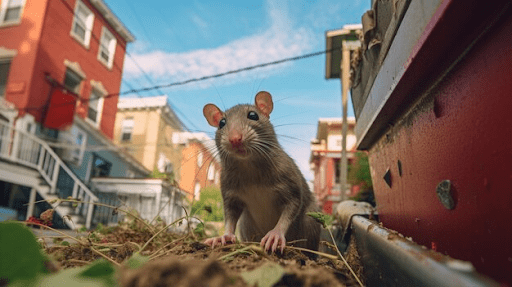Co-living with animals can be tricky because they differ in size and habits. Many of them find it comfortable to live under the same roof as you. Whether you move to a region where critters often appear or want to stay informed – understanding the measures you can take to prevent them from entering is helpful.Â
Some things you start to think about only after a service like CritterStop removes critters. Usually, doing them as a preventative measure is much better than re-entry proofing.Â
Table of Contents
How to Prevent the Infestation Before It Happens
Preventive measures are usually long-term and require persistence. They include the following actions.
Lock the Trash Sources
If you have any trash or food sources outside the house, lock and secure them, so animals cannot smell them from a distance. The smell makes them venture to houses, where they often get trapped in garbage containers. If not noticed and saved promptly, they die. A less tragic consequence is that they share food accessibility with other individuals, so their population grows near your house.Â
Secure working and storage premisesÂ
Lock them tight and check for cracks or holes that could help them get inside. People do not usually clean up working premises often. So, they can miss some signs that a critter has settled down. Storage premises are the least visited and the most filled up, so it can be impossible to identify a problem early.
Proper Wood Storage
Wood storage is a separate question to address. Proper wood piling protects it from pests and animals. The perfect place is a covered space located at a distance from your residential rooms above the ground.
Garden Maintenance
Keeping your garden and lawn maintained keeps critters from approaching your house. Trimmed grass makes it impossible to hide on the ground while cutting trees and bushes does not give access to windows or the attic. Some plants can be good natural repellents and create aesthetic views. For example, marigolds, mint, or rosemary have a specific odor that deters animals with a strong sense of smell. Lily of the Valley creates a thick cover on the ground surface with its roots, which prevents moles from digging in and out.
Regular inspectionÂ
Inspection and attentiveness are golden rules that save money if you identify the infestation early. Typical signs are strange noises, odors, feces, damaged surfaces, and messed-up garbage.Â
The critical difficulty is maintaining the same level of security and developing a robust deterrent strategy to not let animals in. It is easy to forget or underestimate something.
How to Prevent Reentry After Removal
When the problem is solved, you have to ensure that the measures will not allow critters to get into your home again. The service that removes animals should provide a custom-developed and guaranteed protection plan. The baseline principles include the following:
- A service must reveal and seal any construction defects and disadvantages.
- If animal removal requires damaging surfaces, the service workers should properly repair them from both inside and outside.
- Some holes in houses, like ventilation, are vital, so you need covers to limit potential access to the inside of the house.
These general recommendations can vary in specific characteristics by case. It is impossible to create a one-fits-all solution, so you will need a professional consultation that helps you develop an individual protection plan.
Finding unwanted animals in your house is always surprising, sometimes fun, and often dangerous if you ignore the rules. So, it is better to prevent wildlife infestations than remove them. Remember that wildlife control is not pest control, so a humane approach is the baseline for harmonious coexistence.


